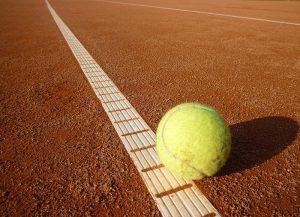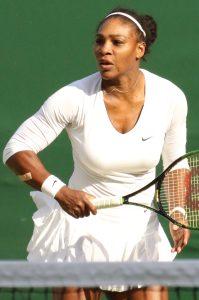We may earn money or products from the companies mentioned in this post.
What Is PR in Tennis?
When it comes to the world of tennis, there’s a term that often pops up – P But what exactly does PR mean in the context of this beloved sport? Well, PR stands for Protected Ranking, and it plays a crucial role in the lives of professional tennis players
So, what’s the purpose of a protected ranking? It serves as a lifeline for players who have been sidelined due to injuries or other long-term absences from the sport In such cases, their ranking can take a nosedive if they are unable to compete regularly However, with a protected ranking in place, they can maintain their position and avoid slipping down the ladder
Now let’s delve into the circumstances that lead to the use of PR in tennis One common scenario is when an athlete sustains a severe injury that requires an extended period of recovery During this time, they may be unable to participate in tournaments and earn ranking points Without a protected ranking system, their hard-earned position could potentially plummet during their absence
Imagine you’re at the peak of your career and suddenly face an unexpected setback like a career-threatening injury or personal circumstances that force you to step away from competition temporarily This is where PR steps in as a safety net It allows players to maintain their standing while they recuperate both physically and mentally
In summary, PR (Protected Ranking) is an invaluable tool designed to safeguard players’ positions when unforeseen circumstances arise Whether it’s recovering from an injury or dealing with personal challenges off-court, having this protective measure ensures that athletes can return without facing additional setbacks caused by fluctuating rankings
Now that we’ve uncovered what PR means in tennis and its significance for players during challenging times let’s explore further aspects about this intriguing concept!
How does PR work in Tennis?

Tennis is a sport that requires immense dedication and skill, but injuries can sometimes hinder a player’s progress In order to support players who have been sidelined due to injury, the tennis governing bodies have implemented a system known as Protected Ranking (PR). This system allows players to maintain their ranking while they recover from an injury or illness Let’s delve into the details of how PR works in tennis
Eligibility for obtaining a protected ranking
1 Duration of absence required:
In order to be eligible for a protected ranking, a player must be absent from competition due to injury or illness for at least six months This duration ensures that the player has faced significant challenges and requires assistance to regain their position in the rankings
2 Documentation needed for application:
To apply for a protected ranking, players need to provide proper documentation such as medical reports and evidence of their absence from tournaments due to the injury or illness These documents are essential for proving the legitimacy of their claim and ensuring fair distribution of protected rankings
Calculation of the protected ranking
1 Based on player’s average ranking during injury period:
The calculation of a player’s protected ranking is based on their average ranking during the time they were unable to compete due to injury or illness This ensures that their protected ranking reflects their performance before being sidelined, giving them an opportunity to resume playing at a similar level when they return
2 Limitations on number of tournaments using PR:
Players are allowed limited opportunities to utilize their protected ranking when returning from injury or illness They can use it for entry into tournaments up until they reach either eight main draw acceptance lists or three Grand Slam main draws, whichever comes first This limitation encourages players to regain their form and ranking through active participation in tournaments
Duration and expiration of the protected ranking
1 Certain time frame for utilization:
A player’s protected ranking remains valid for a specific period of time, generally 12 months from the date they return to competition During this time, they can use their protected ranking to gain entry into tournaments and compete against other players Once this timeframe expires, the player must rely on their actual ranking to secure tournament entries
The Protected Ranking (PR) system in tennis serves as a valuable tool for players who have faced setbacks due to injury or illness It provides them with an opportunity to maintain their position in the rankings while they recover and ensures fair competition when they make their comeback By understanding how PR works, players can navigate their path back into competitive tennis with resilience and determination
Benefits and Importance of PR in Tennis

Fairness and opportunities provided by PR
Player rankings are the backbone of any tennis competition, determining their status and privileges within the sport The concept of Protected Rankings (PR) plays a crucial role in maintaining fairness for players who face challenges that may hinder their performance By preventing players from losing their hard-earned rankings, PR ensures that they maintain their position even during extended periods away from the game due to injury or personal circumstances
In addition to preserving rankings, PR also offers injured players a lifeline to gradually regain their form after recovery It acknowledges that injuries can have a significant impact on a player’s abilities, often resulting in a temporary decline in performance With the help of protected rankings, players are afforded the opportunity to ease back into competitive play without being penalized for their time off the court
Impact on tournament draw and entry
The influence of PR extends beyond individual player rankings and directly impacts tournament draws and entry processes One of its key benefits is facilitating entry into main draws as well as qualifiers For players who have dropped in rankings due to factors such as injury or enforced absence, protected rankings grant them access to tournaments that they would otherwise struggle to enter based solely on their current ranking
Furthermore, protected rankings also have an impact on seeding within tournaments Seeding determines the placement of players in a tournament bracket based on their ranking positions With PR taken into account, it ensures that returning players with protected status are not unfairly low-seeded due to temporary ranking fluctuations caused by unforeseen circumstances
Common Questions about Protected Rankings in Tennis

How do players apply for a protected ranking?
Players who are unable to compete due to injury or other exceptional circumstances can apply for a protected ranking, which allows them to maintain their ranking points and eligibility for tournaments upon their return The process of applying for a protected ranking involves several steps and deadlines that players need to be aware of
The first step is submitting a written application to the governing body of tennis, such as the International Tennis Federation (ITF) or the Association of Tennis Professionals (ATP) / Women’s Tennis Association (WTA). This application should include relevant medical documentation or evidence supporting the player’s inability to compete during the specified time period
Players need to ensure they meet the deadline set by the governing body for applying for a protected ranking It is crucial to submit all required documents and information accurately and within the given timeframe to avoid any delays or complications in processing the application
Can doubles players also request a protected ranking?
Yes, doubles players can also request a protected ranking if they meet certain criteria outlined by the governing body The rules regarding protected rankings for doubles players may vary slightly from those applicable to singles players
In general, doubles players must demonstrate that they were unable to compete as a team due to injury or exceptional circumstances They will need to provide appropriate medical documentation or evidence supporting their claim
It is important for doubles players who wish to apply for a protected ranking to familiarize themselves with the specific guidelines provided by the governing body, whether it be ITF, ATP, or WTA, as rules may differ slightly between organizations
What happens if a player is unable to compete within the specified time frame?
If a player is unable to compete within the specified time frame for which they received a protected ranking, there are potential options available depending on the circumstances
One option is to request an extension of the protected ranking Players can submit a written request to the governing body explaining their situation and providing any necessary supporting evidence The governing body will then review the request and make a decision based on the merits of the case
However, if a player fails to compete within the originally specified time frame or does not receive an extension, they may lose their protected ranking In such cases, they would need to rebuild their ranking points through tournament play in order to regain eligibility for future events
It is essential for players to communicate effectively with the governing body and adhere to any deadlines or requirements regarding their protected ranking status This ensures transparency and fairness in maintaining competitive integrity within the sport of tennis
Useful Links

PRTA
TennisChannelPR
Palantir Partners with Ukrainian Tennis Star Elina Svitolina
Men’s Tennis Schedule 2023
What is PR in Fortnite? Fortnite Power Ranking Explained
Indian Wells ATP Entry List and Seeds
San Juan, Puerto Rico Beach Tennis Events
Beach tennis Puerto Rico (@beachtennis.pr) …
About
Cricket Arena – PR Tennis Ball Cricket Bats. Light…
Puerto Rico Tennis Associacion
LI Region’s PR Chair Honored for Volunteer Work
Meet your Coach
Opelka Criticises ATP’s Climate Comittments as ‘Good PR …
WTA Rankings – Points
Modern Tennis Bracelet
Stan Wawrinka – Tennis player – ATP
Search Archived Player Ranking – USTA Tournaments Home
Kazakh Tennis Player Wins Prestigious ATP 500 title, …






